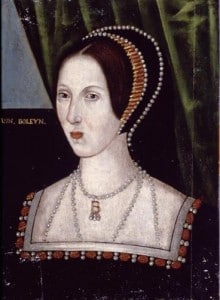 On 14th May 1536, Thomas Cromwell wrote to Stephen Gardiner and Sir John Wallop, Henry VIII’s ambassadors at the French court, to update them on the situation in London. Here is the letter:
On 14th May 1536, Thomas Cromwell wrote to Stephen Gardiner and Sir John Wallop, Henry VIII’s ambassadors at the French court, to update them on the situation in London. Here is the letter:
“The King has deferred answering their letters sent by Salisbury till the arrival of the bailly of Troyes. Has to inform them, however, of a most detestable scheme, happily discovered and notoriously known to all men. They may have heard the rumour of it. Will express to them, however, some part of the coming out, and of the King’s proceeding.
The Queen’s incontinent living was so rank and common that the ladies of her privy chamber could not conceal it. It came to the ears of some of the Council, who told his Majesty, although with great fear, as the case enforced. Certain persons of the privy chamber and others of her side were examined, and the matter appeared so evident that, besides that crime, “there brake out a certain conspiracy of the King’s death, which extended so far that all we that had the examination of it quaked at the danger his Grace was in, and on our knees gave him (God ?) laud and praise that he had preserved him so long from it.” Certain men were committed to the Tower, viz., Marks and Norris and the Queen’s brother; then she herself was apprehended and committed to the same place; after her Sir Fras. Weston and Wm. Brereton. Norris, Weston, Brereton, and Marks are already condemned to death, having been arraigned at Westminster on Friday last. The Queen and her brother are to be arraigned tomorrow, and will undoubtedly go the same way.
I write no particularities; the things be so abominable that I think the like was never heard. Gardiner will receive 200l. of the 300l. “that were out amongst these men, notwithstanding great suit hath been made for the whole; which though the King’s highness might give in this case, yet his Majesty doth not forget your service; and the third 100l. is bestowed of the vicar of Hell [Sir Fras. Brian], upon [whom] though it be some charge unto you, his Highness trusteth ye will think it well bestowed.” From the Rolls in haste, 14 May.
P.S.—Wallop will not be forgotten, though Cromwell cannot tell at present how much he is to have. The King is highly pleased with the services of both.”
“Incontinent”, by the way, means lacking self-control.
It is a letter that surely must have provoked shock in the ambassadors. The Queen and the men had committed such “abominable” crimes that Cromwell couldn’t bring himself to describe them, and they had also conspired to kill the King! What scandal! The letter reads just like the indictments – sensational and shocking tabloid style language – and Crowmell’s words regarding the upcoming trial of the Queen and Lord Rochford, that they “will undoubtedly go the same way” show that their trials have been prejudiced by the trials of Norris, Weston, Brereton and Smeaton. The Queen was unlikely to be found innocent of adultery when those four men had already been found guilty of sleeping with her. Cromwell must also have been sure that the jury would do his bidding.
Cromwell finishes his letter by promising that both Gardiner and Wallop would benefit from the fall of Queen Anne Boleyn.
While Cromwell was composing this letter, Henry VIII was sending Sir Nicholas Carew to bring Jane Seymour to Chelsea and to settle her there – see 14 May 1536 Jane Seymour Moves to Chelsea for more on this.
Notes and Sources
- LP x.873, Letter from Cromwell to Gardiner and Wallop, 14th May 1536